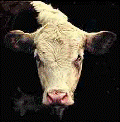Animal Science, Department of

Department of Animal Science: Dissertations, Theses, and Student Research
Date of this Version
Summer 6-30-2011
Document Type
Thesis
Abstract
A prototype smart animal ear tag has been developed to meet the United States Department of Agriculture (USDA) animal disease traceability requirement. This novel ‘Smart Tag’ is a self–powered device capable of complete animal identification and tracking. Information on animal health, breeding and vaccination records can also be locally stored and retrieved from these small, economical and securely accessible wireless tags. These smart tags are capable of self-organizing into wireless ad-hoc networks for data reporting and retrieval. This work presents study of the distance coverage of a ‘Smart Tag’ and a cost-benefit analysis of ‘Smart Tag’ implementation. The mean distance range for a single hop (battery source of power) was 22.6 ± 1.38 m and for a single hop (solar source of power) was 29 m. The total distance coverage using six ‘Smart Tags’ (battery source of power) plus the central computer receiving station using multi–hop communication was 136 ± 1.58 m and for two ‘Smart Tags’ (solar source of power) distance coverage was 54 m. However, due to their ad-hoc wireless nature, the true size of the network is limited by the number of available ‘Smart Tags’. The more tags are connected, the larger the network will become and the larger the coverage area will be. Temperature, humidity and wind speed had no effect (p > 0.05) on packets received within the transmission range. The economic analysis showed that initial cost of a ‘Smart Tag’ system is much greater than for current electronic RFID tags found in market due to its unique features such as being self-powered, wireless, reusable, having greater distance coverage, and having data privacy, however, the benefits may outweigh the investment cost compared to other animal identification technologies.
Advisor: Jeffrey F. Keown


Comments
A THESIS Presented to the Faculty of The Graduate College at the University of Nebraska In Partial Fulfillment of Requirements For the Degree of Master of Science, Major: Animal Science, Under the Supervision of Professor Jeffrey F. Keown. Lincoln, Nebraska: August, 2011
Copyright 2011 Kumud Dhakal